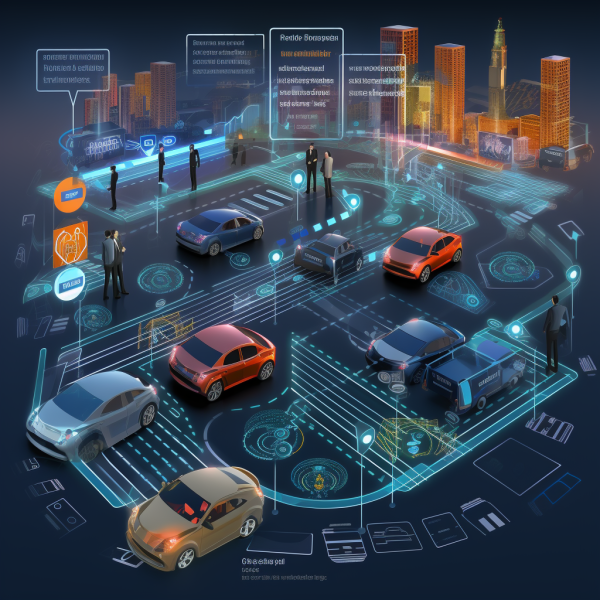Artificial intelligence is moving fast, but one of the most promising frontiers lies in models that don’t just see or read but also act. Vision-Language-Action Models (VLAs) are emerging as a powerful paradigm that combines computer vision, natural language processing, and decision-making into one unified system. These models hold the potential to make machines more human-like in perception and reasoning, while also more useful in real-world scenarios.
In this article, we’ll unpack what VLAs are, how they build upon existing vision-language models, and why industries like autonomous driving are paying close attention.
TL;DR
- VLAs combine vision, language, and action into a single AI framework.
- They enable machines to perceive images, interpret them with linguistic context, and respond with decisions or actions.
- Companies like Wayve are already testing VLAs in autonomous driving through models like LINGO-1.
- Applications range from robotics to healthcare, offering greater transparency, adaptability, and efficiency.
- Natural language may help improve both training speed and public trust in AI-driven systems.
From VLMs to Vision-Language-Action Models: The Evolution of Multimodal AI
To understand VLAs, it helps to start with their predecessor: vision-language models (VLMs). VLMs integrate two modalities:
- Vision: The ability to process and interpret images or video.
- Language: The ability to read, process, and generate natural language.
This dual capability has led to breakthroughs in tasks like image captioning, visual question answering, and multimodal search. For example, a VLM can look at a photo and generate a textual description of what’s happening.
Researchers are now going a step further by adding a third layer: action.
VLAs extend VLMs by enabling models to not just describe what they see but also decide what to do next. This could mean steering a car, moving a robotic arm, or recommending a sequence of steps in a dynamic environment.
In short, VLMs are about understanding and VLAs are about understanding and acting.
How Vision-Language-Action Models Work
At their core, VLAs mimic the way humans combine sight, comprehension, and action:
- Vision — The model processes visual data, recognizing objects, patterns, or movements.
- Language — The model interprets this data in linguistic terms, allowing it to “explain” or contextualize what it sees.
- Action — The model generates a response, which could be a decision, a movement, or an explanation of reasoning.
This triad allows for a new level of interaction between humans and machines. Instead of opaque AI decisions, VLAs can be probed with natural language questions: “Why did you take this action?” or “What do you see ahead?”
Case Study: Wayve’s LINGO-1 and Autonomous Driving
One of the most exciting applications of VLAs today is in self-driving cars. Wayve, a UK-based autonomous vehicle company, recently introduced LINGO-1, an open-loop driving commentator.
Here’s what makes it significant:
- Language as a Training Tool: Traditionally, self-driving models rely on visual and sensor data to train decision-making. By incorporating natural language, VLAs can explain why certain actions are taken. For example, “I slowed down because a pedestrian was crossing.”
- Improved Generalization: Explaining decisions with words helps foundation models generalize to new environments faster. Imagine teaching a car not only through experience but also with real-time linguistic guidance about what it did right or wrong.
- Transparency and Trust: Perhaps most importantly, language-based interaction helps build public trust. Riders could ask, “Why did you change lanes?” and receive an understandable answer. This demystifies AI-driven behavior.
Wayve’s approach points toward a future where autonomous systems are not just black boxes but conversational partners.
Why Natural Language Matters in Training Robots
Natural language brings several unique advantages when added to vision and action in AI models:
- Faster Adaptation: VLAs can learn new tasks more quickly with linguistic cues. A corrective driving action, combined with a verbal explanation, reinforces learning.
- Few-Shot Learning: With limited training data, natural language descriptions can help bridge gaps. Instead of thousands of labeled driving scenarios, a few examples paired with explanations may suffice.
- Better Reasoning: By allowing probing questions, researchers can test what the model actually understands, exposing blind spots and improving reasoning.
- Human-AI Collaboration: Dialogue-based interaction could make working with AI systems feel more natural and intuitive, especially in safety-critical environments.
Applications of Vision-Language-Action Models Beyond Driving
While autonomous vehicles are a headline application, the promise of VLAs extends far wider:
- Robotics: Household robots could explain why they performed a task, enabling more trust and collaboration.
- Healthcare: Medical imaging systems could not only detect anomalies but also explain reasoning to doctors, improving diagnostic confidence.
- Manufacturing: Factory robots could adapt to new tasks faster with natural language instructions.
- Defense and Security: Surveillance systems could combine visual detection with reasoning and explainability.
In each case, the combination of perception, explanation, and action has the potential to transform industries.
Challenges Ahead
Despite their promise, VLAs face several hurdles:
- Complexity: Integrating three modalities into one system increases computational and design complexity.
- Interpretability: While language adds explainability, ensuring that explanations are accurate and not fabricated remains a challenge.
- Scalability: Training models with visual, linguistic, and action-based inputs requires massive datasets.
- Ethical Considerations: Giving machines the ability to explain and act raises questions about accountability, responsibility, and user trust.
The Future of Vision-Language-Action Models
VLAs are still in their early days, but the trajectory is clear. As researchers refine these models, we are likely to see more systems that not only act intelligently but also explain their reasoning. This could mark a turning point in public perception of AI, shifting from opaque systems to transparent collaborators.
In the context of autonomous driving, the stakes are high but so is the potential. A car that can explain itself may be far easier for society to accept than one that simply expects blind trust.
Conclusion
Vision-Language-Action Models represent the next logical step in multimodal AI. By combining perception, comprehension, and response, they open doors to more adaptive, transparent, and trustworthy machines. Whether in cars, hospitals, or homes, VLAs may define the next wave of human-AI interaction.
The road ahead will not be without challenges, but the possibilities are too transformative to ignore. As companies like Wayve experiment with VLAs, the question is not whether they will shape the future but “how fast?”.
These models enable us to ask questions so we can better understand what the model “sees” and to better understand its reasoning. Here’s an example:
Language can help interpret and explain AI model decisions, a potentially useful application when it comes to adding transparency and understanding to AI. It can also help train models, enabling them to more quickly adapt to changes in the real-world.
FAQs
1. What makes Vision-Language-Action Models different from traditional AI?
VLAs combine vision, language, and action, allowing them not only to perceive and describe the world but also to take contextually relevant actions.
2. How do VLAs improve autonomous driving?
By integrating natural language, VLAs help self-driving cars explain their decisions, adapt to new environments faster, and build public trust.
3. Are VLAs already being used in real-world systems?
Yes. Wayve’s LINGO-1 is one early example in autonomous vehicles. Research is ongoing in robotics, healthcare, and manufacturing.
4. What role does language play in these models?
Language helps models learn faster, explain reasoning, and allow humans to interact with them more intuitively.
5. What are the main challenges for VLAs?
Challenges include scalability, ensuring truthful explanations, handling multimodal complexity, and addressing ethical concerns.
Related content you might also like:
- Combining Complex Systems
- From Assistant to Colleague: The Rise of Autonomous AI Agents
- Trust is the lifeblood of well-functioning teams
- 6 Things Divorce Taught Me about Marriage and Love
- Made in America (Again)



